This Is How Much It Costs To Run A Professional Race Team
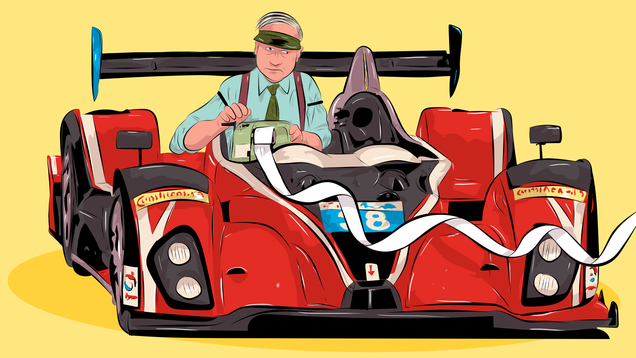 Racing
is expensive. The cars, the trucks, the tires, hell, even the snazzy
polo shirts with a little logo on it all cost money. But it’s always
been a mystery just how much money. Until now. Here’s the story of how
one team spent more than $150,000 on all of it – and that’s just for one
race.
Racing
is expensive. The cars, the trucks, the tires, hell, even the snazzy
polo shirts with a little logo on it all cost money. But it’s always
been a mystery just how much money. Until now. Here’s the story of how
one team spent more than $150,000 on all of it – and that’s just for one
race.
Modern
motorsports requires massive financial and logistical resources. There’s
not only the race car, but the engineers and mechanics. Same goes for
the catering, the flights for everyone to get to the tracks dispersed
all over the country. And that’s before you get into the fuel and tires,
which cost you a decent chunk of change for a bit of autocrossing and
thus cost many multiples more when you’re at a real race track.
Everyone
knows racing costs a lot of money. What everyone generally doesn’t know
is exactly how much. There’s always been a big disconnect between what
fans see in the stands and on TV and what really goes on behind the
scenes.
But we’ve been given an exclusive look into the shadowy world of racing finance and we’re going to tell you as much as we can.
The Team
Performance
Tech Motorsports, founded in 1982 by team owner Brent O’Neill, races a
car in the Prototype Challenge class of IMSA’s Tudor United Sports Car
Championship. PTM isn’t some backmarker, bringing up the rear in every
race as it squeezes what it can out of every last dollar.
Just last week, PTM drivers James French and Conor Daly captured pole position and a second place finish at Road America. Daly would have walked away with the win, too, were it not for ending up on the wrong end of a nail-biting finish.
But you
need to spend money to get those kinds of results. And for reasons that
are still a little unclear to us, but for which we are extremely
grateful, they gave us a quick peek at their books. We agreed not to
divulge the exact totals of how much everything costs for competitive
reasons, but we can give you some of the nitty-gritty details.
“Nitty-gritty
details,” in this case, means staggering dollar figures for seemingly
mundane things that will make your bank account weep unless you’re a regular Pebble Beach attendee.
To give you
a sense of what it costs we’re going to look at the cost of just one,
single, solitary race weekend. We’re not children, however, so let’s
start with a good race weekend: The 24 Hours of Daytona.
The Race
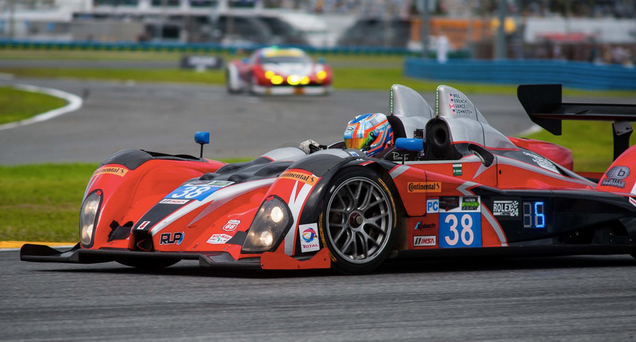
America’s
greatest endurance race, it’s a grueling challenge that’s part of the
Triple Crown of Endurance Racing. For the team and fans alike, it’s more
than just a day at the track.
In fact,
it’s six days at the track for nine people. All of those people need
hotel rooms, so that’s $5,670 out the door. All of those people need to
eat and deal with a bunch of daily expenses, too, so that’s another
$2,100. But first you have to get everyone there, so $1,800 is spent on
airfare. So that’s $9,570 that has already been spent and the car hasn’t
come near the track.
Some costs
are actually cheaper than normal, as PTM is based in Florida,the same
state where the race is being held. But you still need to get the racer
to the course, so $1,100 is spent to lease and operate those big fancy
transporter trucks, where the car is nestled inside before the race.
Oh right,
about that car getting on the track. The race requires an entry fee of
$15,650, or about the starting price of a new Fiat 500 if the dealer
gives you a bit of a break. And with that, you’re going racing.
Well, it’s not that simple. Actually racing
is incredibly expensive as well. The costs for repairing, replacing,
refurbishing, and rebuilding everything that goes wrong during the race
need to be factored in. So for the chassis, the brakes, the paint on the
car, the engine, and the gearbox, you’ll basically be paying for a
nicely equipped BMW 3 Series.
And you’re going to want to fuel the car up for that 24-hour race, so be prepared to drop over $12,000 for the privilege.
But those
aren’t even the biggest cost. The biggest expense, by far, is tires.
I’ll let you take a few guesses as to what a couple sets of tires will
cost.
Go on, guess.
...
...
...
GUESS.
...
Alright, what’d you guess? $20,000? $25,000? $30,000?
Not even close.
For the 2015 Daytona 24 Hours, Performance Tech Motorsports says they dropped $50,000 on tires alone.

All in, PTM
spent the equivalent of a very generously optioned Aston Martin V8
Vantage S, simply for the opportunity to race at Daytona.
And somehow, the team actually makes a profit off of all of this.
The Owner
Brent
O’Neill, the owner of PTM, is a bit of a rare breed himself in the
racing world. His great-grandfather didn’t win 17 Formula One world
championships, and no one handed him a team. He dabbled in racing
himself, racing karts from age 13 or 14, though it wasn’t the horse
racing his grandfather originally envisioned.
Starting at
such a late age in karts, however, isn’t the optimal way to make it
into the top tiers of racing. So by the time it came to go to college,
he was accepted into the University of Miami.
“My parents
wanted me to go to UMiami, and become some sort of lawyer or
accountant,” he told me in a phone interview. “But instead, I went to
work for a guy in a little race shop.”
While at
Don Courtney’s team he went to tech school, where he learned to weld and
build cars. On the side, he drove an RV for the team, and worked as a
shop boy. O’Neill got some racing experience along the way, however, as
his biography on the team’s website states:
While on the road with Courtney, he received his first chance to get behind the wheel of a race car.“He had been competing in the SCCA, and we had gone to Road Atlanta for a test,” O’Neill said. “He knew I had been karting and I had worked hard, so he said I could get in the car. Well, I ended up being faster than him, and this was in 1973 or ‘74 when he had been winning SCCA championships. So after that, he put me in the car with him.”
But again,
the realities of life got in the way, O’Neill told me. Racing is fun,
but if you aren’t the fastest guy out there, then you need to start
planning for the future.
“I realized
that there were young kids come along, and I’ll be out of a job one
day,” he said. “And the kids will be faster than me, so I’ve got to
start my own shop.” That was more than 25 years ago, and to this day,
O’Neill stills owns the team in its entirety, and the whole operation is
completely debt free.
O’Neill
said that it helps that he doesn’t own a million-dollar house, and he
doesn’t drive a million-dollar car. He actually owns a Ford F-350, which
he uses as his daily driver.
And owning
your own shop and owning it debt free is all very well and good. But as
we’ve already established, racing is enormously pricey, and if you’re
going to make any money off of it, the capital needs to come from
somewhere.
The Drivers
“The funds
mainly come from the drivers,” O’Neill said. James French, who set last
week’s pole position, has aspirations to the top level of racing, and
his father was able to contribute some “seed money” to get James going.
“Seed money,” in this case, means that not only the cash coming from
James, but his talent, as well, help bring in extra dough. If other
drivers and sponsors see that credible capital and drivers are joining a
team, then they’ll want to bring their capital and talent as well.
Drivers and sponsors, like Dash Express,
want to be associated with success. Some companies like specific
drivers, with Conor Daly having a particularly close relationship with
pork company Smithfield Foods.
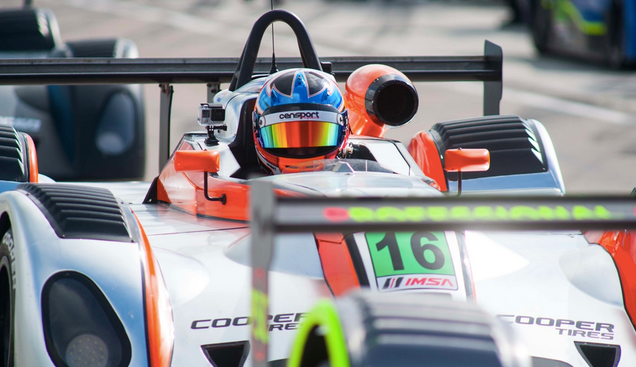
Drivers coming up the ranks, who race in the IMSA Prototype Lites series, also contribute to the bottom line.
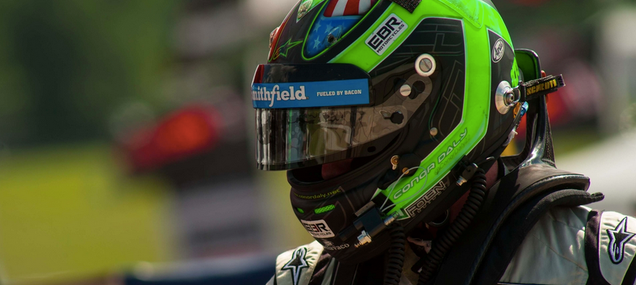
Sponsors
don’t just pay for their name on the sides of the car, either. They pay
for events at the race tracks, bringing in clients for parties, all of
which generates money.
And when it
comes to racing prize money, O’Neill says not to count on it. It’s just
too unpredictable, even when you have fast drivers like Daly and
French.
Other
costs, that most people wouldn’t think of, are defrayed by the nature of
the business. All of the drivers provide their own health insurance.
All of the mechanics have their health insurance covered by the team ,
except on race days, when they’re insured by IMSA itself (here’s IMSA’s insurance requirement for the Detroit Grand Prix).
For the
icing on the cake, PTM sells its old race cars, and services trackday
specials and club cars for customers. One guy wanted to turn his BMW E46
M3 into a track car. Three weeks and $18,000 later, he had his caged
racer ready to go. Another wanted to turn his Chevrolet Corvette Z06
into a full-on race car, complete with track instruction. Four months
and $60,000 later, he was ready to compete.
O’Neill
wouldn’t disclose just how much money the team actually makes, but at
the end of the day, he says it’s profitable. And when it comes to
keeping a business afloat, that’s all that matters.
The Total
While the
biggest race of the year can seem exorbitant in its own right, it’s
nothing compared to the price of a full Tudor race season and its 56
days at the track. Again, tires are the biggest cost, with all 90 sets
of tires used over the race season setting the team back $225,000.
That’s $2,500 a set, or $625 for a single piece of rubber if you bought
it off of TireRack. Fuel, at $41,075, costs almost as much as engines,
at $43,000, which costs almost as much as transmissions, at $43,500.
Clothing costs $2,750, and hotel rooms cost damn near $40 grand. Entry fees are structured unusually, as well. IMSA’s standard entry form
says that appearing at the Roar Before The 24 Hours of Daytona will
cost you fees of $2,500. But Brent says that it’s not so simple.
“I wish it
was $2,500,” Brent said. But “we have to write a check in December to
NASCAR for $35,000 to be considered a full season entrant, and then we
get a small discount through the year.” So by the end of the year, a
full season ends up costing $104,850 in entry fees alone.
For a whole
season, an entire race team costs about a million dollars, give or take
a couple hundred thousand depending on the year. And that’s in a year
where they don’t have to buy a new car, which costs around $400,000.
In context, the team’s costs run around the middle of the pack. We reached out to one of our resident Jalopnik hot shoes/racing drivers/hoverboarders Robb
Holland, who said that everything looks about right. Fuel expenses are
on the high side, while clothing costs are on the low side, and if you
want to win every race, you drop an extra $50,000 here and there.
Of course,
not every team wants to win every race. O’Neill told us that teams will
cut corners here and there to minimize costs – running tires until the
treads are dangerously worn down, running brake pads and rotors until
they’re past minimum levels, outsourcing engineering work.
But when
all is said and done, when the checkered flag is waving, and the
champagne is spraying for you and your team, you’ll know just how much
it costs to make it all happen.

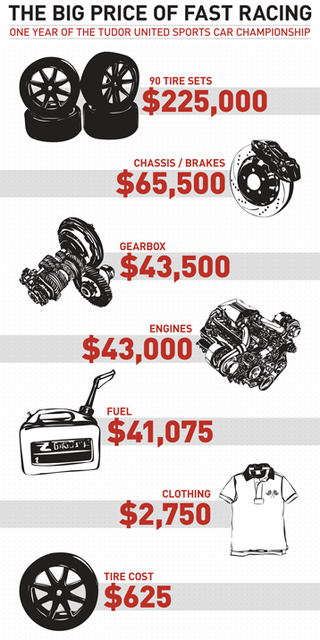

No comments:
Post a Comment